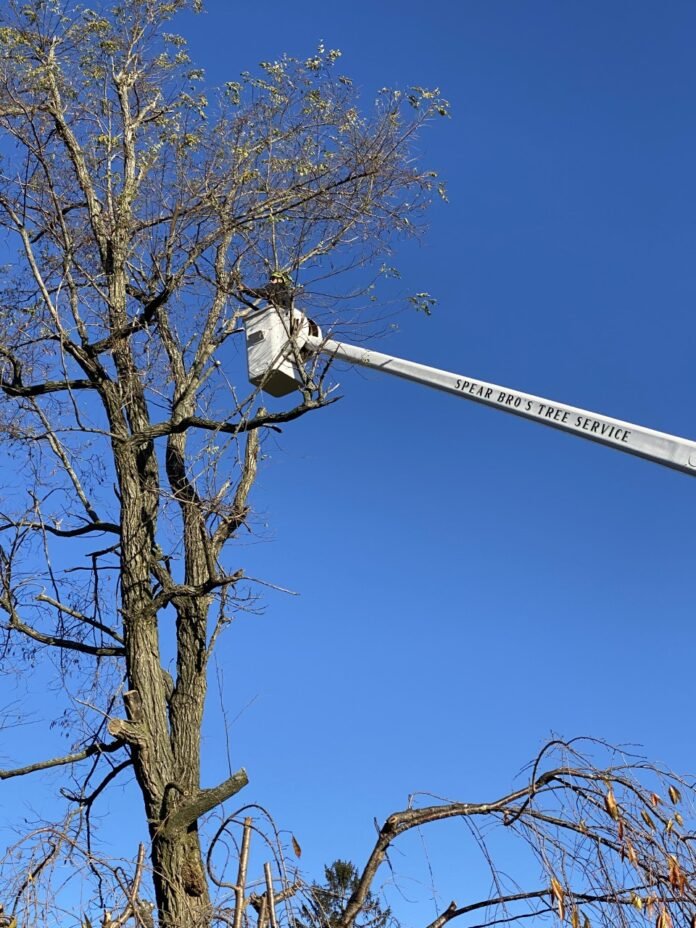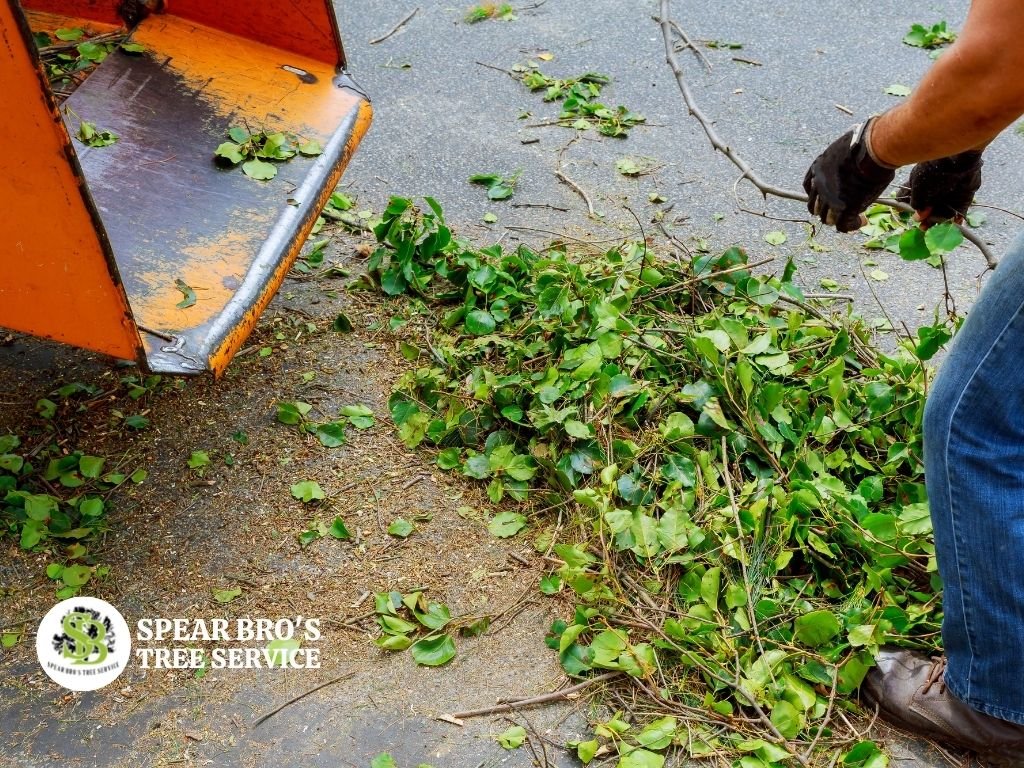A variety of reasons exist for trimming trees and shrubs, including reducing the size of the plant, removing obstructions from the canopy, improving its shape, and removing dead or diseased vegetation. In order to maintain the tree or shrub’s health and vigour, pruning must be done appropriately.
As arborists and aesthetic pruners, we are trained to comprehend the morphology of trees and plants. Branches that pose a danger to the plant’s health, endanger persons or property, or detract from its overall appearance are only removed or modified after an evaluation of the plant’s general form has been completed. A key to good pruning is to minimise the number of cuts necessary to obtain the desired results. In the end, you’ll get a robust, naturally shaped plant.
Pruning at the right time is essential
Pruning in the winter has numerous advantages. Pruning trees and shrubs during the winter months in northeast CT is a great idea because they are dormant at this time of year. As a bonus, you’ll be less likely to transfer hazardous infections and the plant will be less stressed out. Pruning trees before spring bud break also helps them recover more quickly.
Pruning should be avoided in the autumn. New growth stimulated by pruning cuts will be terminated as soon as temperatures drop below freezing, though. As the growing season draws to a close, trees and shrubs begin to utilise their stored energy stores to fuel fresh growth in the autumn. Frozen dieback indicates that the energy expended on this expansion was in vain.
Leaf and flower buds should not be harmed. Pruning a tree in the fall can eliminate the buds that formed throughout the summer’s growth. It is during the winter months that these buds are latent and then bloom. Remove these dormant buds, and you run the risk of removing the plant’s spring blossoms, while also increasing the plant’s need to generate new leaf buds. Rhododendrons and conifers, for example, benefit greatly from late-summer pruning, before the plants begin setting buds for the next year.
If you prune spring-flowering trees and shrubs in late winter or early spring, you’ll see a similar absence of blossoms. Pruning should be delayed until after the flowers have bloomed.
Prevent pests and diseases from attacking trees by not pruning them at their most vulnerable time of year. Pruning at the incorrect time might leave your plants and trees vulnerable to disease pathogens that are airborne or carried by insects, even if you avoid the most typical mistakes here. In northeast CT, for example, oak wilt and Dutch elm disease are spread by insects that are drawn to tree wounds (such as fresh pruning cuts). Pruning during the summer months, when the beetles are most active, will help limit the spread of these deadly tree diseases.
Crabapple pruning cuts should be made with the correct direction in mind.
The tree’s limbs are sprouting new growth as it strives to recuperate from being chopped in half.
CUTS WITHOUT FLUSHING
As a general rule, a flush cut is one of the most prevalent blunders in pruning. When you remove a branch from a tree by cutting it flush with the trunk or a larger branch to which it is attached, this happens.
A flush cut removes the branch collar, which is needed to form a seal over the pruning cut, even if it appears clean and streamlined. A flush cut leaves an entrance for pests and pathogens to enter the plant and cause harm or death, as the plant is unable to seal over the wound.
Find the branch collar, which is an area of increased diameter around the base of each branch, and cut slightly beyond it. The branch collar is stimulated to grow over and close the wound by a pruning cut here.
NO STUB CUT
Instead of a short branch collar, stub cuts result in an exposed protruding end, which the branch collar cannot grow around.
To avoid stub cuts, use this rule of thumb: If you can hang a hat on it, it’s too long.
There will be no lion’s tail.
Another common blunder is “lion tailing,” which is the practice of eliminating the majority of the branch’s internal branches while retaining the branch’s ends. Due to the following reasons, this approach is not advised:
Removes too much foliage.
The tree’s structure is jeopardized since the weight is shifted to the branches’ tips.
Allows the crown to be damaged by wind and sunburn.
Growth sprouts (or “water sprouts”) along the stem and branches increase the reactivity or stress response. The tree is sending out new growth swiftly in an attempt to create energy through photosynthesis, as evidenced by these reaction sprouts.
HEADING CUTS WILL NOT BE MADE.
Damage is done both structurally and aesthetically to huge branches by heading cuts.
If the branch is cut at any point along its length, a heading cut will leave behind only an undersized side branch that will grow in the opposite direction.
A pruning cut made at a random position on a branch encourages the creation of several weakly attached new branches that do not follow the natural course of branch growth. Small branches can grow up and out of an unstable branch stump, which is both visually unappealing and aesthetically unappealing.
The results of heading cuts can be seen in forsythias that have been sheared or topped trees. Having a tangle of weak, spindly branches sprout from the cut limbs is not only unsightly, but it also increases the frequency with which the tree must be pruned in order to keep them in check.
Heading cuts can be a good option in some cases, but only a Certified Arborist can tell you when, when, and why to make those cuts.
Use the 3-CUT METHOD
In order to avoid tearing the bark off of the larger branches, the 3-cut pruning procedure is used.
The bark of trees that have had massive branches cut off by a non-professional is frequently damaged. Pruning mistakes like this are common, and it’s usually because the branch was chopped off in a single felling.
The three-step technique for major branch pruning should be followed for all pruning cuts.
- To begin, make a shallow cut in the branch’s underside, about an inch or two past the branch’s collar. If the branch falls while being cut, this will act as a barrier, preventing a bark tear.
- A stub will be left behind after you cut two to four inches beyond the branch collar to remove the branch.
- Cutting through the branch slightly beyond the branch collar is all that is needed to remove the stub from the branch.
- Make Use Of Appropriate Pruning Instruments
- Pruning shears, loppers, pruning saws, and chainsaws are just a few of the many pruning implements available. The more powerful the tool, the more powerful the branch that is to be cut.. Attempting to hack through a 3-inch branch with a lopper is likely to result in annoyance and a butchered branch that is subject to disease and pests, for instance. All cutting tools should be sharp, calibrated appropriately, and the appropriate size for the work.
Final Thoughts on Pruning
Pruning is simplified when you are familiar with a plant’s flowering and branching tendencies. In general, all pruning should be limited, eliminating only what is necessary for each species.
Hiring a Certified CT Tree Service to handle the pruning for you is the best option if you’re intimidated by the task or want to avoid making costly blunders. It’s not only better for the tree, but it’s also cheaper in the long term.



















